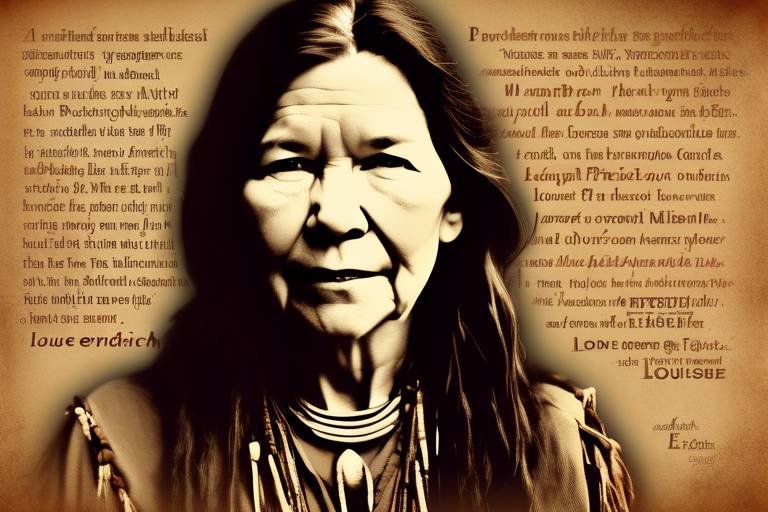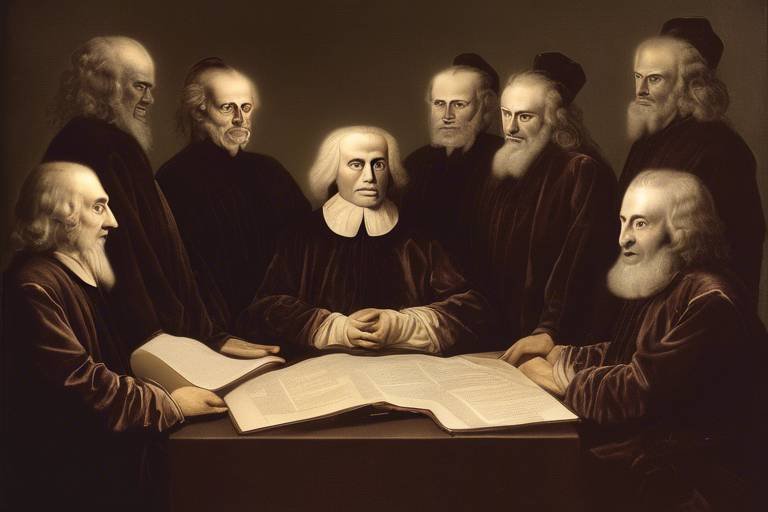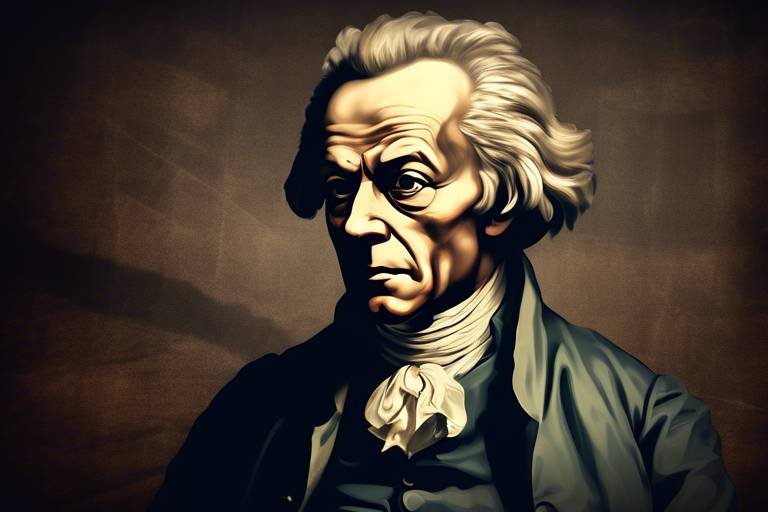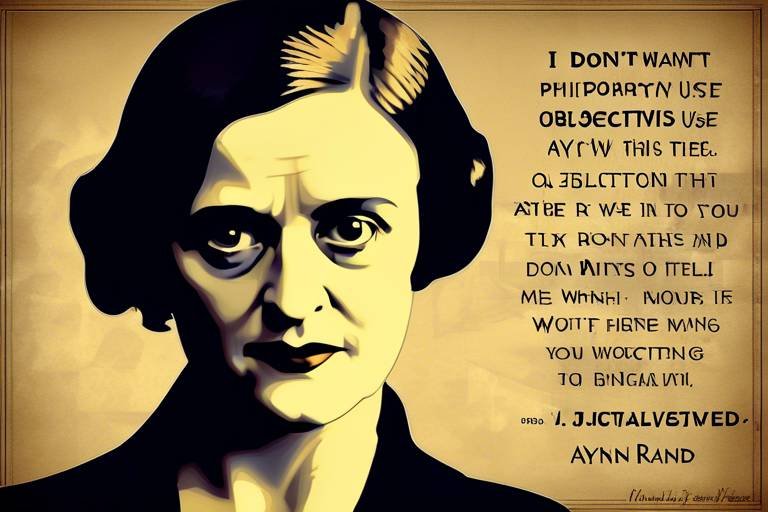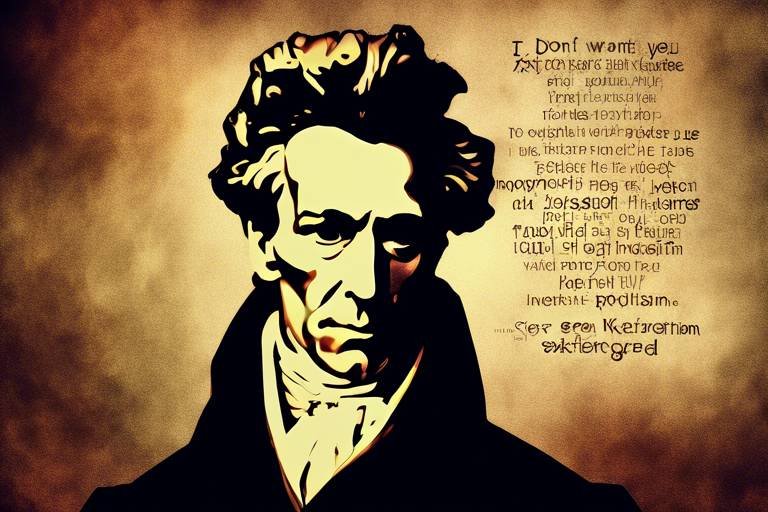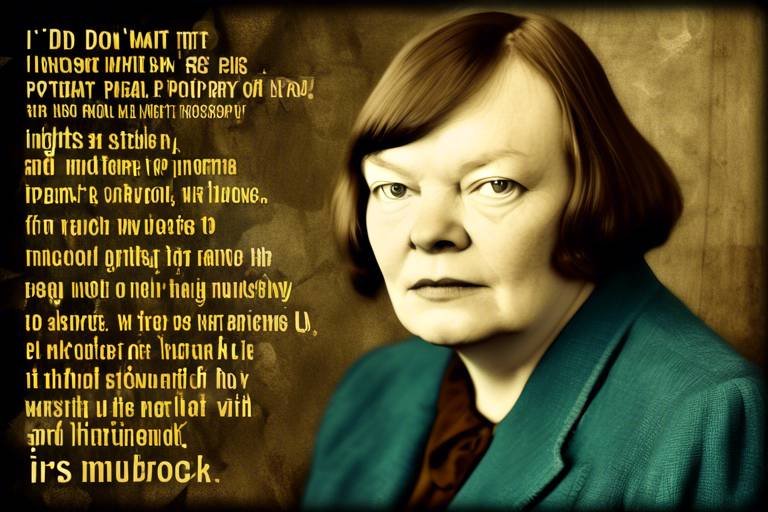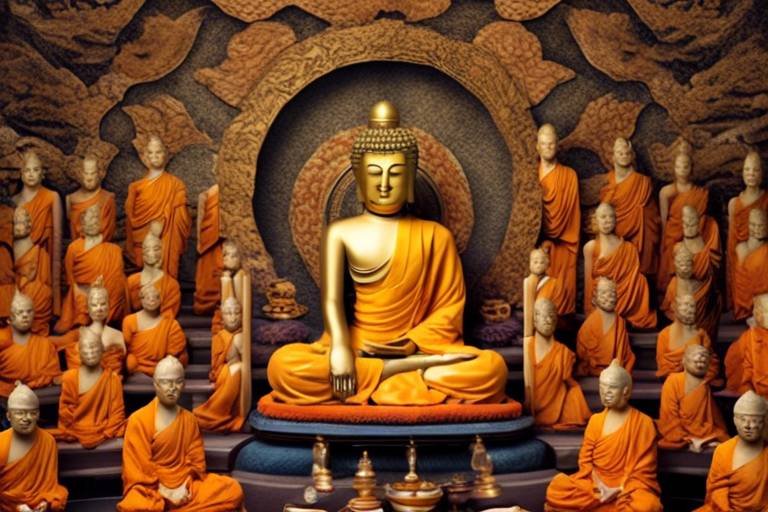Contributions of Antonio Gramsci to Cultural Hegemony Theory
Antonio Gramsci, an Italian Marxist philosopher and communist politician, made significant contributions to the understanding of power dynamics through his concept of cultural hegemony. His work is not just a historical artifact; it's a lens through which we can examine the intricate relationship between culture, ideology, and power in society today. Gramsci's theories illuminate how dominant social classes maintain control, not merely through coercive means, but by shaping the very beliefs and values that govern everyday life. This article delves into the essence of Gramsci's thought, exploring how cultural hegemony operates as a battleground for ideological struggle, and why it remains relevant in contemporary discussions about power and culture.
Cultural hegemony is a term that describes the way in which a dominant social class influences and shapes the beliefs, values, and norms of society. Gramsci's insights reveal that culture is not just a backdrop to political and economic struggles; it's a critical arena where these battles are fought. By establishing a cultural hegemony, the ruling class can create a consensus that legitimizes their dominance, making it seem natural and inevitable. This process involves the subtle manipulation of cultural institutions—such as media, education, and religion—to propagate ideologies that serve their interests. In essence, cultural hegemony transforms the way we perceive reality, often blurring the lines between what is socially constructed and what is considered 'common sense.'
To fully appreciate Gramsci's contributions, it's essential to understand the historical and political context in which he wrote. Living in early 20th-century Italy, a time marked by social upheaval and political instability, Gramsci witnessed the rise of fascism and the failures of the socialist movement. His experiences shaped his theories, leading him to explore the intricate connections between culture and power. Gramsci argued that the struggles of the working class could not be understood solely through economic lenses; rather, they must also account for cultural factors. His writings reflect a deep concern for the role of intellectuals in society, whom he believed could either reinforce or challenge the status quo.
Gramsci's work is deeply rooted in Marxist theory, yet he took it a step further by emphasizing the significance of culture in maintaining power. Traditional Marxism often focused on economic structures and class struggle, but Gramsci highlighted the need to consider how cultural practices and ideologies influence social relations. He argued that culture is a site of struggle, where various social groups contest for dominance. This adaptation of Marxism underscores the interplay between economics and culture, suggesting that to understand power dynamics, one must examine both realms simultaneously.
One of Gramsci's key arguments is the pivotal role of intellectuals in establishing and maintaining cultural hegemony. He believed that intellectuals are not merely passive observers; they actively participate in shaping public consciousness. By disseminating dominant ideologies, intellectuals help to normalize certain beliefs and values, making them appear as common sense. This process is crucial for the ruling class, as it allows them to secure their position without resorting to overt coercion. In Gramsci's view, the struggle for cultural hegemony is as much about ideas and beliefs as it is about material conditions.
Gramsci introduced the concept of common sense as a form of ideology that reflects the interests of the ruling class. He argued that what is often taken for granted as 'common sense' is, in fact, a product of ideological conditioning. This notion illustrates how everyday beliefs can support hegemonic power structures, often without individuals even realizing it. For instance, the idea that hard work leads to success is a common belief that can obscure the systemic inequalities present in society. By critiquing common sense, Gramsci encourages us to question the ideologies that shape our understanding of the world.
Gramsci's theories also address the potential for counter-hegemony, wherein marginalized groups challenge dominant ideologies. This aspect is vital for understanding social movements and resistance strategies. Gramsci believed that through collective action and the development of alternative narratives, oppressed groups could disrupt the status quo and create spaces for their voices. The concept of counter-hegemony is particularly relevant in today's world, where various movements are rising to contest mainstream ideologies and advocate for social justice.
Gramsci emphasized the importance of civil society as a site of ideological struggle. He argued that institutions such as schools, churches, and media play a crucial role in shaping cultural norms and values. These institutions are not neutral; they are battlegrounds where different ideologies compete for dominance. For example, education can perpetuate cultural hegemony by promoting the values of the ruling class, or it can serve as a tool for critical thinking and social change. Understanding the role of civil society is essential for grasping how cultural hegemony operates in practice.
Education is a key mechanism for perpetuating cultural hegemony. Gramsci's insights into education reveal its dual potential: it can either reinforce dominant ideologies or challenge them. In many societies, educational institutions are designed to reproduce existing power structures, teaching students to accept the status quo. However, Gramsci also saw education as a space for critical engagement and empowerment. By fostering critical consciousness, education can become a tool for social change, enabling individuals to question and resist hegemonic ideologies.
The media serves as a powerful tool for disseminating cultural narratives. Gramsci's theories can be applied to analyze how media shapes public perception and reinforces or contests hegemonic ideologies. In the age of information, understanding the media's role in shaping cultural discourse is more important than ever. Whether through news outlets, social media, or entertainment, the narratives presented can either uphold or challenge existing power structures. Gramsci's work encourages us to critically engage with media content and consider whose interests are being served.
Gramsci's contributions to cultural hegemony continue to influence contemporary social theory, critical studies, and political discourse. His frameworks provide valuable tools for analyzing power relations in modern societies, helping us to understand the complexities of culture and ideology. As we navigate an increasingly polarized world, Gramsci's insights remind us that cultural struggles are central to political movements and social change. By engaging with his theories, we can better comprehend the dynamics at play in our own societies and work towards a more equitable future.
- What is cultural hegemony? Cultural hegemony refers to the dominance of one social class over others, shaping beliefs and values through cultural institutions.
- How did Gramsci's historical context influence his theories? Gramsci's experiences in early 20th-century Italy, marked by political instability and the rise of fascism, shaped his understanding of power, culture, and the role of intellectuals.
- What role do intellectuals play in cultural hegemony? Intellectuals help disseminate dominant ideologies, shaping public consciousness and normalizing the interests of the ruling class.
- What is counter-hegemony? Counter-hegemony refers to the efforts of marginalized groups to challenge and disrupt dominant ideologies.
- Why is Gramsci's work still relevant today? Gramsci's insights into power dynamics, culture, and ideology provide valuable frameworks for understanding contemporary social movements and the complexities of cultural struggles.
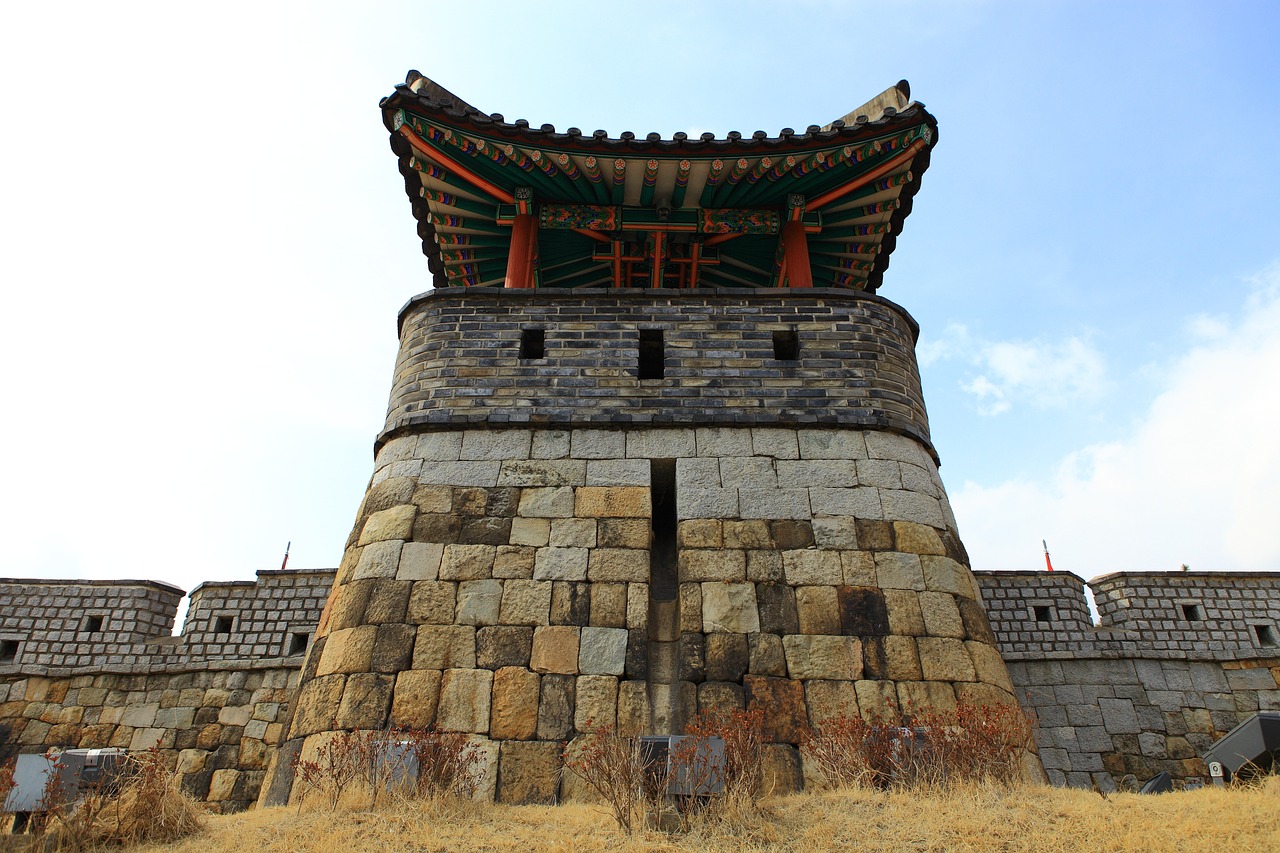
The Concept of Cultural Hegemony
Cultural hegemony is a term that dives deep into the intricate dance of power and culture within society. It refers to the way in which a dominant social class exerts its influence over others, effectively shaping the beliefs, values, and norms that govern everyday life. Imagine culture as a vast ocean; the dominant class is like a massive ship steering the currents while smaller boats—representing marginalized groups—struggle to navigate the waves created by this overwhelming force. Gramsci's insights illuminate the idea that culture is not merely a backdrop to social existence but a battleground where ideological struggles unfold.
At its core, cultural hegemony suggests that the ruling class doesn't just control the economy or the state; they also control the cultural narrative. This means that their values and beliefs become the "common sense" of society, making it challenging for alternative perspectives to gain traction. For instance, consider how advertising and media often promote consumerism as a desirable lifestyle. This cultural narrative isn't just about selling products; it's about embedding a worldview that aligns with the interests of the powerful. As a result, individuals may unconsciously adopt these values, believing them to be natural or universal.
Gramsci argued that this process of cultural domination is subtle and often goes unnoticed. It's not about overt coercion; instead, it's about creating a consensus where the dominant ideology becomes accepted as the norm. This is where the role of intellectuals becomes crucial. They act as the navigators of this cultural ship, interpreting and disseminating ideas that reinforce the status quo. Through education, media, and various cultural institutions, they help to shape public consciousness, making it easier for the ruling class to maintain control.
In essence, cultural hegemony is about understanding how power operates through culture. It's a reminder that the struggle for power is not only fought in the political arena but also in the hearts and minds of individuals. By recognizing this, we can begin to see the potential for change, as the very same cultural mechanisms that uphold hegemony can also be harnessed to challenge it. As Gramsci noted, the struggle for cultural hegemony is ongoing, and the potential for counter-hegemony—where marginalized groups push back against dominant ideologies—remains a vital aspect of social dynamics.

Gramsci's Historical Context
To truly grasp the significance of Antonio Gramsci's contributions to cultural hegemony theory, one must delve into the historical and political context of early 20th-century Italy. This was a period marked by profound social upheaval, economic instability, and the rise of fascism, all of which shaped Gramsci's worldview and theoretical framework. Born in 1891 in Sardinia, Gramsci witnessed firsthand the struggles of the working class and the oppressive nature of the ruling elite. His experiences were not just personal; they reflected the broader tensions within Italian society, where the gap between the wealthy and the poor was stark and often violent.
Gramsci's political activism began during his university years, as he became involved with the Italian Socialist Party. The political landscape was tumultuous, with various factions vying for power and influence. The rise of industrial capitalism was coupled with the emergence of a labor movement that sought to challenge the status quo. Gramsci's writings during this time were deeply influenced by the struggles for workers' rights and the fight against fascism, which would later dominate Italy under Mussolini's regime.
In this climate of political repression, Gramsci was arrested in 1926 and subsequently imprisoned by the fascist government. His time in prison was not spent idly; rather, it became a period of intense intellectual activity. He wrote extensively, producing the Prison Notebooks, where he articulated his theories on culture, power, and ideology. It was here that he developed the concept of cultural hegemony, arguing that the ruling class maintains control not just through coercion but also through the manipulation of cultural norms and values.
Gramsci’s insights on the role of intellectuals were particularly significant in this context. He believed that intellectuals are not merely passive observers but active participants in the ideological battles of their time. They serve as mediators between the ruling class and the masses, shaping public consciousness and influencing societal values. This perspective was revolutionary, as it positioned culture as a battleground for ideological struggle, rather than a mere reflection of economic conditions.
To further illustrate the historical context in which Gramsci operated, consider the following table that outlines key events and influences during his lifetime:
| Year | Event/Influence |
|---|---|
| 1891 | Antonio Gramsci is born in Sardinia. |
| 1919 | Formation of the Italian Socialist Party. |
| 1920s | Rise of fascism in Italy and increasing political repression. |
| 1926 | Gramsci is arrested and imprisoned by the fascist regime. |
| 1935 | Gramsci dies in prison, leaving behind the influential Prison Notebooks. |
In conclusion, understanding Gramsci's historical context is essential for appreciating the depth and relevance of his theories on cultural hegemony. His life and work were a response to the tumultuous events around him, and his insights continue to resonate in today's discussions about power, culture, and ideology. Gramsci's legacy is not just a theoretical framework; it is a call to recognize the complexities of cultural struggle in the face of domination.
- What is cultural hegemony? Cultural hegemony is the dominance of one social class over others, shaping beliefs and values through cultural practices and ideologies.
- How did Gramsci's imprisonment influence his work? Gramsci's imprisonment led to a period of intense intellectual activity, where he formulated many of his key theories in the Prison Notebooks.
- Why are intellectuals important in Gramsci's theory? Intellectuals play a crucial role in establishing and maintaining cultural hegemony by disseminating dominant ideologies and shaping public consciousness.
- What is counter-hegemony? Counter-hegemony refers to the efforts of marginalized groups to challenge and resist the dominant ideologies and power structures in society.
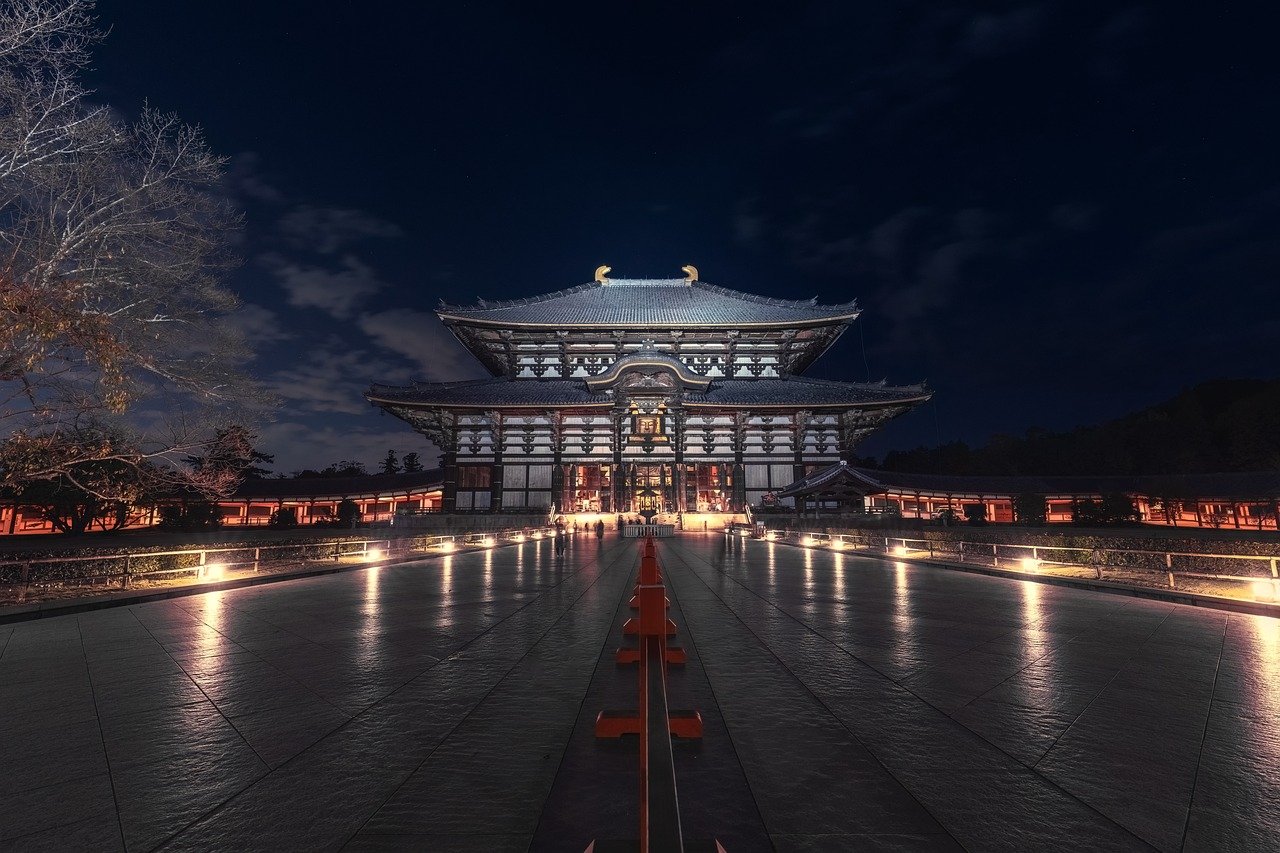
Influence of Marxism
Antonio Gramsci's intellectual journey is deeply intertwined with Marxist theory, which served as the foundation for his exploration of cultural hegemony. While he firmly rooted his ideas in Marxism, Gramsci took a bold step forward by emphasizing the importance of culture in the maintenance of power. This was a significant deviation from traditional Marxist thought, which primarily focused on economic factors as the main drivers of societal structure. Gramsci believed that to truly understand power dynamics, one must consider how cultural practices and ideologies shape and reinforce class dominance.
In Gramsci's view, the ruling class does not merely exert control through force or economic power; instead, they also establish their dominance by shaping the cultural landscape. This idea can be likened to a puppet master pulling the strings behind the scenes. The ruling class manipulates cultural narratives and ideologies, embedding their values into the very fabric of society. Gramsci argued that this process is subtle yet powerful, as it creates a sense of common sense among the populace, leading them to accept the status quo without question.
Gramsci's adaptation of Marxism also highlights the interplay between economics and culture. He recognized that while economic conditions set the stage for class struggles, it is the cultural context that often dictates how these struggles unfold. For instance, a worker might be aware of their economic exploitation, but if the prevailing culture glorifies the wealthy and demonizes the poor, they may internalize these beliefs, hindering their ability to organize and resist. This dynamic illustrates the profound impact that cultural ideologies can have on social movements and class consciousness.
To further elaborate on Gramsci's perspective, consider the following table that outlines the key differences between traditional Marxism and Gramsci's approach:
| Aspect | Traditional Marxism | Gramsci's Approach |
|---|---|---|
| Focus | Economic factors | Cultural and ideological factors |
| Power Dynamics | Class struggle | Ideological struggle |
| Role of Intellectuals | Limited | Crucial for shaping public consciousness |
| Resistance | Economic revolt | Cultural counter-hegemony |
In summary, Gramsci's influence on Marxism is characterized by his innovative approach to understanding power and culture. By shifting the focus from purely economic factors to include cultural elements, he provided a more comprehensive framework for analyzing social dynamics. This not only enriched Marxist theory but also opened new avenues for exploring how marginalized groups can challenge dominant ideologies. Gramsci's insights remain relevant today, serving as a guiding light for those seeking to understand the complexities of power and resistance in contemporary society.
- What is cultural hegemony? Cultural hegemony is the dominance of one social class over others, shaping beliefs and values in a way that supports the ruling class's interests.
- How did Gramsci expand Marxism? Gramsci expanded Marxism by emphasizing the role of culture and ideology in maintaining power, rather than focusing solely on economic factors.
- What role do intellectuals play in cultural hegemony? Intellectuals help disseminate dominant ideologies, shaping public consciousness and social norms, thereby playing a crucial role in establishing and maintaining cultural hegemony.
- What is counter-hegemony? Counter-hegemony refers to the efforts of marginalized groups to challenge and resist dominant ideologies, creating space for alternative narratives and practices.

Intellectuals and Hegemony
Antonio Gramsci's exploration of the relationship between intellectuals and cultural hegemony is both profound and enlightening. He posited that intellectuals are not merely scholars or thinkers confined to the ivory towers of academia; rather, they are essential actors in the social and political landscape. Gramsci categorized intellectuals into two main types: traditional and organic. Traditional intellectuals see themselves as independent from the ruling class, often believing they are above the fray of social struggles. In contrast, organic intellectuals emerge from within a particular social class, articulating the interests and experiences of their peers.
This distinction is crucial because it reveals how intellectuals can either reinforce or challenge the dominant ideologies of their time. For instance, traditional intellectuals might propagate the status quo, serving the interests of the ruling elite, while organic intellectuals can mobilize the marginalized, providing a voice to those who feel unheard. By doing so, they contribute to the potential for counter-hegemony, which is the process through which oppressed groups challenge and resist the prevailing cultural narratives.
Gramsci argued that intellectuals play a vital role in the establishment and maintenance of cultural hegemony. They are the ones who disseminate ideas, shape public consciousness, and influence social norms. This means that the power of ideas is not just in their creation but also in their circulation. Intellectuals, through their writings, speeches, and teachings, help to normalize certain beliefs and values, making them appear as common sense. This process is subtle yet powerful, as it often goes unnoticed by the general populace.
Moreover, the influence of intellectuals extends beyond academia into various institutions such as the media, education, and religion. For example, consider the role of educators in shaping young minds. They can either perpetuate dominant ideologies or encourage critical thinking and resistance. Similarly, journalists and media figures can frame news stories in ways that uphold or challenge the existing power structures. Thus, the intellectual's role is multifaceted and deeply intertwined with the fabric of society.
In conclusion, Gramsci's insights into the role of intellectuals in the context of cultural hegemony remind us that knowledge is not neutral. It is a potent tool that can either uphold oppressive systems or pave the way for liberation. As we navigate today's complex social landscape, recognizing the influence of intellectuals can empower us to critically engage with the ideas that shape our world.
- What is cultural hegemony? Cultural hegemony is the dominance of one social class's values and beliefs over others, shaping societal norms and ideologies.
- How did Gramsci view the role of intellectuals? Gramsci viewed intellectuals as crucial players in establishing and maintaining cultural hegemony, capable of either reinforcing or challenging dominant ideologies.
- What is the difference between traditional and organic intellectuals? Traditional intellectuals see themselves as independent of social struggles, while organic intellectuals emerge from specific social classes, advocating for their peers' interests.
- How can counter-hegemony occur? Counter-hegemony can occur when marginalized groups challenge dominant ideologies through activism, education, and alternative narratives.
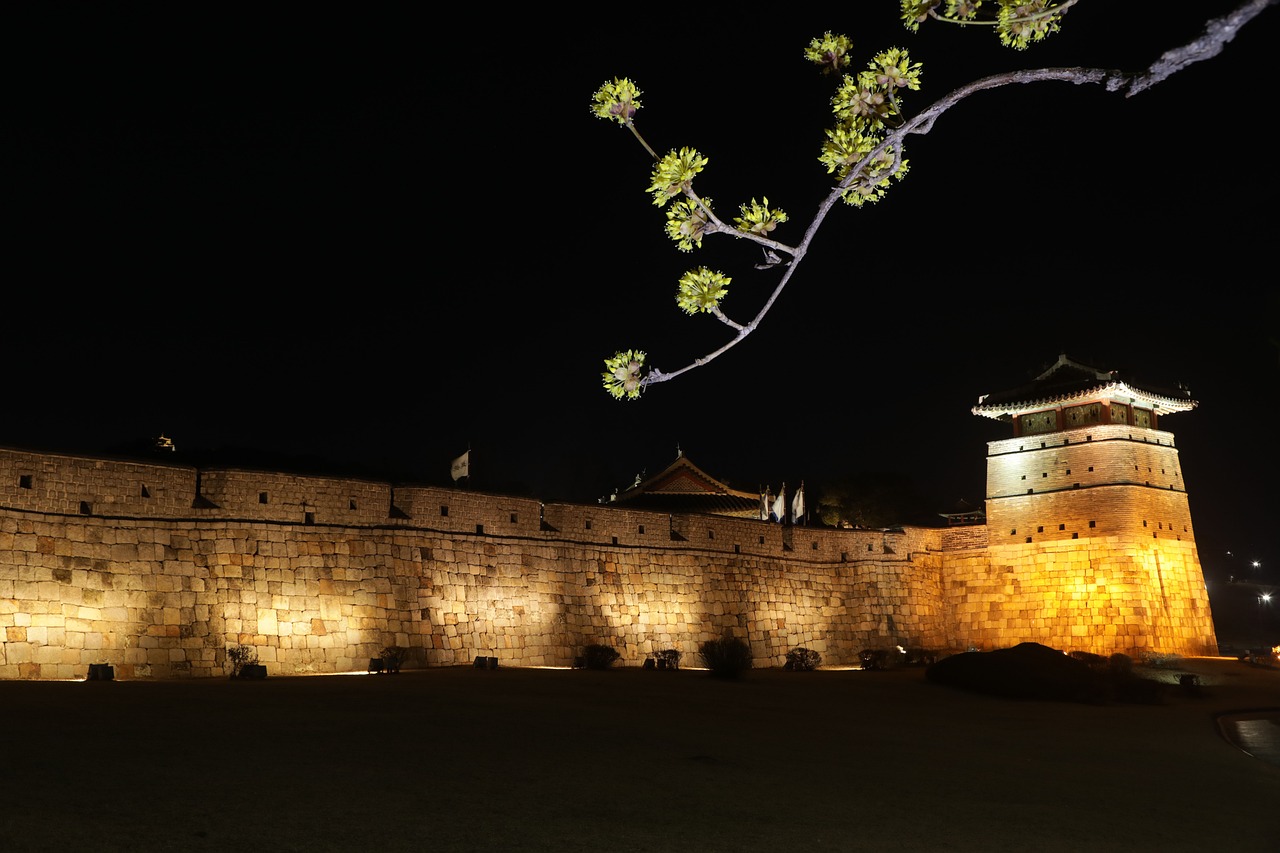
Common Sense and Ideology
Antonio Gramsci's notion of common sense is a fascinating lens through which to understand the intricate relationship between ideology and societal beliefs. He proposed that common sense is not merely a collection of widely accepted ideas; rather, it is a form of ideology that reflects the interests of the ruling class. In essence, common sense embodies the values, norms, and beliefs that are so ingrained in our daily lives that they often go unquestioned. This leads us to ponder: how many of our beliefs are truly our own, and how many have been shaped by external influences?
Gramsci argued that these common sense ideas serve to maintain the status quo, acting as a subtle mechanism of control. They create a framework within which individuals interpret their experiences and understand their place in society. This is where the real power of common sense lies—it normalizes the prevailing ideologies, making them seem natural and inevitable. For example, consider the way certain economic systems are portrayed as the only viable options, effectively marginalizing alternative viewpoints. This phenomenon can be likened to a fish in water; it doesn’t notice the water until it’s pointed out, just as people often fail to recognize the ideological influences that shape their perceptions.
Moreover, Gramsci emphasized that common sense is not static; it is constantly evolving and can be contested. This opens the door for counter-hegemonic movements, where marginalized groups can challenge the dominant ideologies that shape common sense. For instance, social movements advocating for racial equality or environmental justice often begin by questioning the dominant narratives that have been accepted as common sense. By doing so, they aim to reshape public consciousness and promote alternative ideologies that better reflect the interests of broader society.
To illustrate this concept further, let’s consider a simple table that highlights the differences between common sense and ideology:
| Aspect | Common Sense | Ideology |
|---|---|---|
| Definition | Everyday beliefs and values accepted as 'normal' | Systematic set of ideas that justify power structures |
| Function | Reinforces the status quo | Challenges and legitimizes power |
| Flexibility | Evolves with societal changes | Often rigid, but can be contested |
| Examples | Beliefs about work ethic, family roles | Political ideologies, economic theories |
In conclusion, Gramsci's exploration of common sense reveals how deeply embedded ideologies can shape our understanding of the world. By recognizing the role of common sense in perpetuating the ruling class's interests, we can begin to question our own beliefs and engage in a more profound ideological struggle. This not only empowers individuals but also fosters a more critical and reflective society, capable of challenging the status quo and advocating for a more equitable world.
- What is cultural hegemony? Cultural hegemony refers to the dominance of one social class over others, shaping beliefs and values in a way that benefits the ruling class.
- How does common sense relate to ideology? Common sense is a form of ideology that reflects the interests of the ruling class, often going unchallenged in everyday life.
- Can common sense change over time? Yes, common sense is not static; it evolves with societal changes and can be contested by marginalized groups.
- What role do intellectuals play in cultural hegemony? Intellectuals help disseminate dominant ideologies, shaping public consciousness and reinforcing or challenging cultural norms.
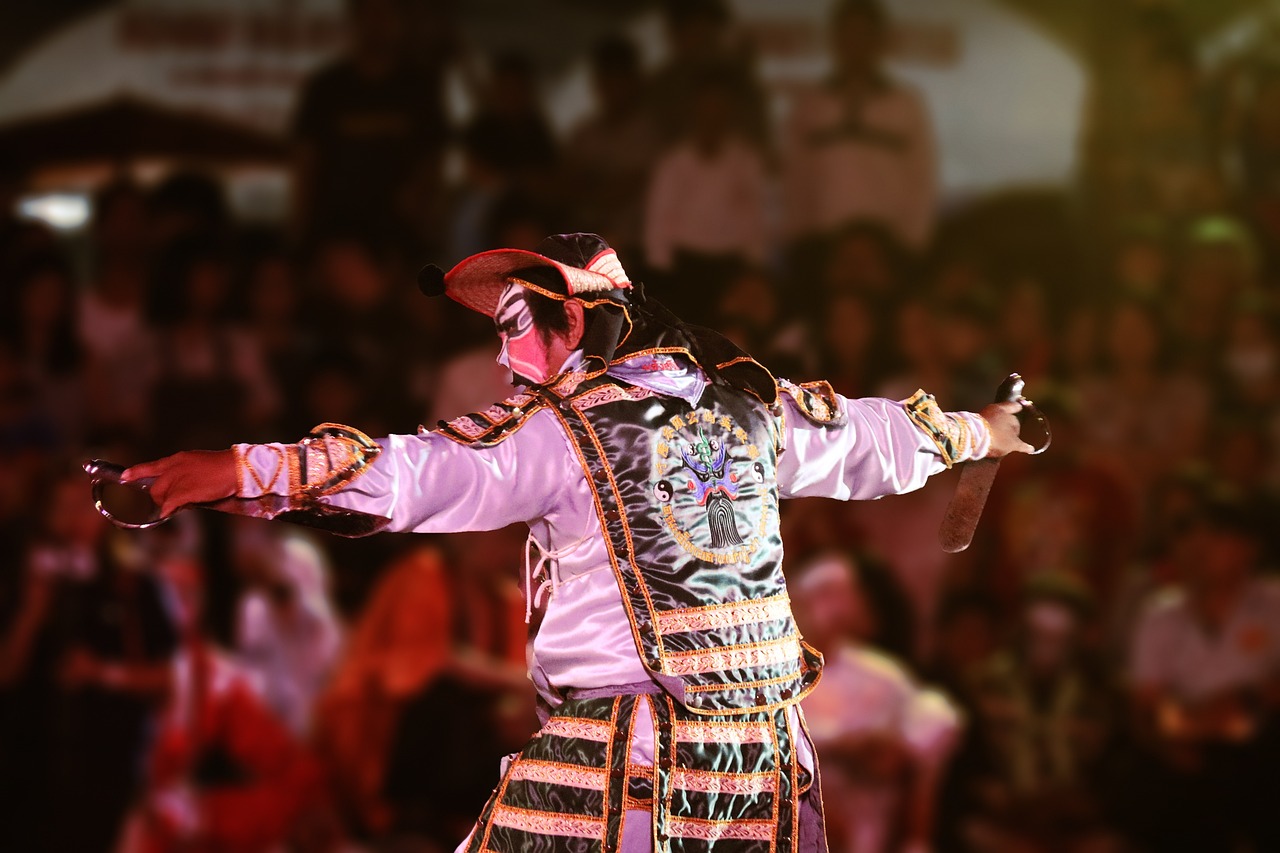
common sense
This article explores Antonio Gramsci's pivotal role in developing cultural hegemony theory, examining its implications for understanding power dynamics, culture, and ideology in society.
Cultural hegemony refers to the dominance of one social class over others, shaping beliefs and values. Gramsci's insights reveal how culture is a battleground for ideological struggle and social control.
Understanding the historical and political milieu in which Gramsci wrote is crucial. His experiences in early 20th-century Italy influenced his theories on power, culture, and the role of intellectuals in society.
Gramsci's work is deeply rooted in Marxist theory, yet he expanded it by emphasizing culture's role in maintaining power. His adaptation of Marxism highlights the interplay between economics and cultural practices.
Gramsci argued that intellectuals play a vital role in establishing and maintaining cultural hegemony. They help disseminate dominant ideologies, shaping public consciousness and social norms.
Gramsci introduced the idea of as a form of ideology that reflects the interests of the ruling class. This concept illustrates how everyday beliefs support hegemonic power structures. Common sense is not merely a collection of trivial opinions; rather, it forms a complex web of ideas that permeate society, often going unchallenged. Gramsci argued that these ideas become so ingrained in our daily lives that they are perceived as natural or self-evident truths.
For instance, consider how certain stereotypes or cultural norms are accepted without question. These notions shape our understanding of the world and influence our behaviors, often aligning with the interests of those in power. Gramsci believed that by critically analyzing these so-called common sense ideas, individuals could uncover the underlying ideologies that sustain the status quo. In this way, common sense acts as a double-edged sword: it can either reinforce existing power structures or serve as a foundation for challenging them.
To illustrate Gramsci's concept of common sense, we can look at the following table that contrasts dominant ideologies with counter-hegemonic ideas:
| Dominant Ideology | Counter-Hegemonic Idea |
|---|---|
| Individual success is solely a personal achievement. | Success is often influenced by systemic inequalities. |
| Consumerism equates to happiness. | True fulfillment comes from community and relationships. |
| Education is a meritocratic process. | Access to quality education is often unequal. |
By recognizing and questioning these common sense beliefs, individuals can begin to understand the ideological underpinnings of their society and potentially mobilize for change. Gramsci's emphasis on common sense serves as a reminder that ideology is not just an abstract concept; it is woven into the fabric of our everyday lives. By engaging with these ideas, we can better navigate the complexities of cultural hegemony.
Gramsci's theories also address the possibility of counter-hegemony, where marginalized groups challenge dominant ideologies. This aspect is essential for understanding social movements and resistance strategies.
Gramsci emphasized civil society's role as a site of ideological struggle. He believed that institutions like schools, churches, and media are crucial in shaping cultural norms and values.
Education is a key mechanism for perpetuating cultural hegemony. Gramsci's insights into education highlight its potential to either reinforce or challenge dominant ideologies.
The media serves as a powerful tool for disseminating cultural narratives. Gramsci's theories can be applied to analyze how media shapes public perception and reinforces or contests hegemonic ideologies.
Gramsci's contributions to cultural hegemony continue to influence contemporary social theory, critical studies, and political discourse, providing frameworks for analyzing power relations in modern societies.
- What is cultural hegemony? Cultural hegemony refers to the dominance of one social class over others, shaping beliefs and values within a society.
- How did Gramsci contribute to this theory? Gramsci expanded Marxist theory by emphasizing the role of culture and ideology in maintaining power structures.
- What is the significance of common sense in Gramsci's theory? Common sense reflects the interests of the ruling class and illustrates how everyday beliefs support hegemonic power structures.
- What is counter-hegemony? Counter-hegemony refers to the efforts of marginalized groups to challenge and resist dominant ideologies.
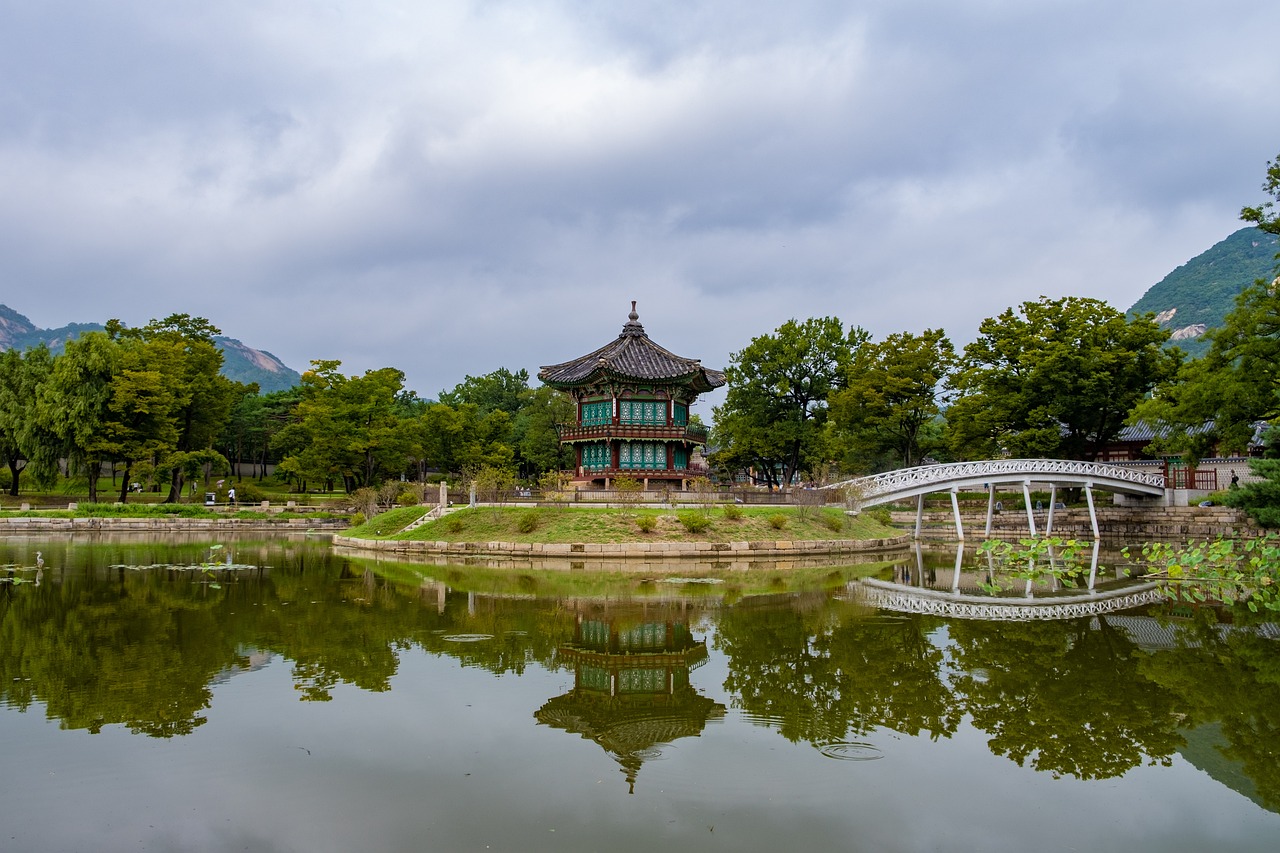
as a form of ideology that reflects the interests of the ruling class. This concept illustrates how everyday beliefs support hegemonic power structures.
Antonio Gramsci's concept of common sense is a fascinating lens through which we can examine the intricate tapestry of ideology in our daily lives. Essentially, common sense refers to the set of beliefs and assumptions that are widely accepted within a society, often without questioning their origins or implications. Gramsci argued that these everyday beliefs are not merely innocent thoughts; rather, they are deeply embedded forms of ideology that reflect and support the interests of the ruling class. In other words, what we often consider common knowledge is, in fact, a product of cultural hegemony, subtly reinforcing the status quo.
To illustrate this point, think about how certain ideas or norms become so normalized that they seem natural. For instance, the belief that hard work guarantees success is a prevalent notion in many cultures. While it sounds empowering, it can obscure the systemic inequalities that exist. This idea serves to justify the existing social order, making it easier for those in power to maintain their dominance. Gramsci's insight reveals that these seemingly innocuous beliefs can act as powerful tools of social control, shaping our perceptions and behaviors in ways that often go unnoticed.
Moreover, Gramsci's analysis of common sense helps us understand how hegemonic power structures operate. These structures thrive on the acceptance of certain ideologies that align with the ruling class's interests. For example, the media, education systems, and various institutions play a crucial role in disseminating these ideologies. They help to create a shared understanding of what is considered "normal" or "acceptable," which in turn legitimizes the power of the elite.
In this context, it's essential to recognize that challenging common sense is a critical step in the struggle against hegemony. When marginalized groups question these dominant beliefs, they open up spaces for alternative narratives and ideologies to emerge. This act of resistance is vital for fostering a more equitable society, as it disrupts the complacency that often accompanies accepted norms.
In summary, Gramsci's concept of common sense reveals how everyday beliefs are intricately linked to the interests of the ruling class. By understanding this connection, we can better comprehend the mechanisms of cultural hegemony and the importance of questioning the ideologies that shape our lives. As we engage with these ideas, we empower ourselves to challenge the status quo and advocate for a more just and inclusive society.
- What is cultural hegemony? Cultural hegemony is the dominance of one social class over others, shaping beliefs and values in a way that maintains their power.
- How does common sense relate to ideology? Common sense reflects the interests of the ruling class and illustrates how everyday beliefs support hegemonic power structures.
- Why are intellectuals important in Gramsci's theory? Intellectuals play a crucial role in establishing and maintaining cultural hegemony by disseminating dominant ideologies.
- What is counter-hegemony? Counter-hegemony refers to the efforts of marginalized groups to challenge and resist dominant ideologies.
- How does education perpetuate cultural hegemony? Education can reinforce or challenge dominant ideologies, shaping how individuals understand their roles in society.

Counter-Hegemony
In the intricate dance of power dynamics, emerges as a vital counterbalance to the dominant ideologies that seek to control societal norms and values. Antonio Gramsci's insights into this concept reveal how marginalized groups can challenge the status quo, creating a space for alternative narratives and ideologies to flourish. Think of it as a game of tug-of-war where the ruling class holds the rope tightly, yet the underdogs pull back with equal force, striving to reclaim their narrative and redefine the rules of the game.
Counter-hegemony isn't merely about resistance; it's about reclaiming agency and creating a new cultural landscape. Gramsci believed that for any meaningful change to occur, those who are oppressed must not only recognize their subjugation but also unite and articulate their own values and beliefs. This process often involves grassroots movements, where communities come together to challenge the dominant discourse, fostering solidarity and collective identity.
Consider the social movements throughout history that exemplify counter-hegemony. For instance, the civil rights movement in the United States challenged the prevailing ideologies of racial superiority and segregation. Activists like Martin Luther King Jr. and Rosa Parks became pivotal figures, not just advocating for equality but also reshaping public consciousness around issues of race and justice. Their efforts illustrate how counter-hegemonic movements can penetrate the cultural fabric, shifting perceptions and ultimately leading to significant societal changes.
Moreover, counter-hegemony can manifest in various forms, including:
- Art and Literature: Artists and writers often use their platforms to critique dominant ideologies, providing alternative perspectives that resonate with the experiences of the marginalized.
- Social Media: In today's digital age, social media serves as a powerful tool for mobilization and dissemination of counter-hegemonic narratives, allowing voices that were once silenced to gain visibility.
- Community Organizing: Grassroots organizations work tirelessly to empower individuals, fostering a sense of belonging and collective action against oppressive structures.
Ultimately, Gramsci's concept of counter-hegemony underscores the importance of dialogue and engagement in the struggle for social justice. By challenging dominant ideologies, marginalized groups not only resist oppression but also pave the way for a more equitable society. This ongoing battle for cultural space is not just a theoretical exercise; it's a living, breathing reality that shapes our world every day.
What is counter-hegemony?
Counter-hegemony refers to the ways in which marginalized groups challenge and resist the dominant ideologies and power structures in society. It emphasizes the importance of alternative narratives and collective action in creating social change.
How does counter-hegemony manifest in society?
Counter-hegemony can manifest through various means, including art, literature, social media, and community organizing. These forms of expression and action allow oppressed groups to reclaim their narratives and advocate for their interests.
Why is counter-hegemony important?
Counter-hegemony is crucial for fostering social justice and equality. It empowers marginalized voices, challenges oppressive systems, and promotes a more inclusive and equitable cultural landscape.

The Role of Civil Society
Civil society plays a crucial role in Antonio Gramsci's theory of cultural hegemony, acting as both a battleground for ideological struggles and a vital space for the dissemination of cultural norms and values. Gramsci viewed civil society as encompassing a wide array of institutions, including schools, churches, and media, which collectively shape the beliefs and practices of individuals within a society. This is where the real contest for power occurs, not just in political arenas but in the everyday lives of people. The influence of civil society is profound; it is within these institutions that dominant ideologies are both reinforced and challenged.
To put it simply, civil society serves as the stage where the drama of cultural hegemony unfolds. Imagine a theater where various actors portray different ideologies, with the audience—society at large—absorbing these performances. The dominant class, or hegemonic group, utilizes civil society to project its values and beliefs, creating a sense of 'common sense' that aligns with its interests. However, this stage is not one-sided. Marginalized groups also have the potential to perform their narratives, contesting the dominant script and seeking to rewrite the story of their existence. This dynamic interplay is what makes civil society a critical arena for ideological struggle.
Gramsci believed that the institutions of civil society are essential for establishing and maintaining cultural hegemony. For instance, consider the role of education. Schools are not merely places for academic learning; they are instrumental in shaping the moral and ethical frameworks of society. They teach not only facts but also the values that support the status quo. This is where Gramsci's insights become particularly relevant. He argued that education can either perpetuate the dominant ideology or serve as a means of resistance, depending on how it is utilized. In this sense, the role of educators and intellectuals becomes pivotal, as they can either reinforce hegemonic narratives or challenge them through critical pedagogy.
Moreover, the media serves as another powerful institution within civil society. It acts as the lens through which we view the world, influencing public perception and opinion. Gramsci’s theories can be applied to analyze how media narratives are constructed and disseminated, often reflecting the interests of the ruling class. However, the media also has the potential to amplify counter-hegemonic voices, providing a platform for alternative narratives that challenge the status quo. This dual role of the media highlights the complexities of civil society as a site of ideological struggle.
In summary, civil society is not just a passive backdrop for the exercise of power; it is an active participant in the cultural hegemony process. Institutions within civil society shape and are shaped by the ongoing contestation of ideas and values. Understanding this dynamic is essential for anyone seeking to grasp the nuances of power relations in contemporary society. As we navigate the complexities of our world, recognizing the role of civil society can empower us to engage critically with the cultural narratives that surround us.
- What is civil society?
Civil society refers to the sphere of social life that exists outside of the state and the market, including organizations like NGOs, community groups, and various institutions that represent the interests of citizens. - How does civil society relate to cultural hegemony?
Civil society is a crucial arena where ideologies are contested and negotiated, influencing the establishment and maintenance of cultural hegemony. - Can civil society challenge dominant ideologies?
Yes, civil society can serve as a platform for marginalized groups to challenge dominant ideologies and promote alternative narratives. - What role does education play in civil society?
Education is a key institution in civil society that can either reinforce or challenge dominant ideologies, shaping the values and beliefs of individuals.

Education and Hegemony
Education is not merely a process of acquiring knowledge; it is a powerful mechanism that plays a pivotal role in establishing and perpetuating cultural hegemony. Antonio Gramsci recognized that schools and educational institutions are more than just places for learning; they are battlegrounds for ideological struggle. Through education, dominant ideologies are transmitted, and the values of the ruling class are reinforced. This process often occurs unnoticed, as students absorb these beliefs as 'common sense' without questioning their origins or implications.
Gramsci argued that the curriculum is often designed to reflect the interests of the powerful, subtly shaping the minds of future generations to align with the status quo. For instance, subjects that emphasize individual achievement over collective welfare can foster a sense of competition that benefits the elite. This is not to say that education cannot be a force for change; rather, it is a double-edged sword. It has the potential to challenge hegemonic ideologies if utilized effectively. Educational reformers and progressive educators can introduce critical pedagogy, encouraging students to question and analyze the world around them.
To illustrate the relationship between education and hegemony, consider the following table that highlights key aspects:
| Aspect | Role in Hegemony | Potential for Change |
|---|---|---|
| Curriculum Content | Reflects ruling class values | Can be reformed to include diverse perspectives |
| Teaching Methods | Reinforces conformity | Can promote critical thinking and questioning |
| Access to Education | Often unequal, favoring the privileged | Advocacy for equal access can empower marginalized groups |
Moreover, Gramsci believed that education is deeply intertwined with the concept of civil society. Institutions such as schools, churches, and community organizations play a crucial role in shaping cultural norms and values. They can either perpetuate the existing power structures or serve as platforms for challenging them. For example, when educational institutions embrace inclusive curricula that reflect the experiences and histories of marginalized communities, they can disrupt the dominant narratives and foster a more equitable society.
In conclusion, education serves as a vital tool in the maintenance of cultural hegemony, but it also possesses the potential for transformative change. By recognizing the power dynamics at play within educational systems, we can begin to envision a future where education not only informs but also empowers individuals to challenge the status quo. As Gramsci would likely advocate, the key lies in fostering critical consciousness among students, enabling them to navigate the complexities of power and ideology in their lives.
- What is cultural hegemony? Cultural hegemony refers to the dominance of one social class over others, shaping beliefs and values through cultural institutions.
- How does education contribute to cultural hegemony? Education can perpetuate dominant ideologies by reflecting the values of the ruling class, but it can also challenge these ideologies through critical pedagogy.
- What role do intellectuals play in cultural hegemony? Intellectuals help disseminate dominant ideologies and shape public consciousness, making them crucial in establishing and maintaining cultural hegemony.
- Can education be a force for social change? Yes, education has the potential to empower individuals and groups to challenge existing power structures and promote social justice.

Media's Influence
The media, in all its forms, plays a crucial role in shaping our understanding of the world around us. Whether it’s through television, newspapers, or social media platforms, the narratives presented influence our perceptions, beliefs, and ultimately, our behaviors. Gramsci's theories on cultural hegemony can be applied to analyze how media not only reflects societal values but also actively participates in constructing them. Think about it: when you turn on the news or scroll through your social media feed, you are not just consuming information; you are engaging with a curated narrative that often aligns with the interests of dominant social groups.
For instance, consider the way certain issues are framed in the media. Topics such as immigration, climate change, or economic inequality are often presented in ways that can either reinforce existing power structures or challenge them. This framing is not accidental; it is a deliberate process influenced by those who control the media outlets. Gramsci would argue that this process of framing is a form of ideological control, where the media serves as a battleground for competing ideologies. The dominant narrative, often aligned with the ruling class, tends to marginalize alternative perspectives, effectively silencing dissenting voices.
Moreover, the media's influence extends beyond just the content it produces. The very medium itself can shape how messages are received. For example, visual media such as films and advertisements can create emotional responses that text-based media may not evoke. This emotional engagement can lead to a stronger connection with the narrative being presented, making it more likely for audiences to internalize these dominant ideologies. As Gramsci noted, the struggle for cultural hegemony is not just about ideas; it’s also about how those ideas are disseminated and consumed.
To illustrate this point, let’s take a look at a simple table that highlights different media forms and their potential impact on cultural narratives:
| Media Form | Potential Impact on Cultural Narratives |
|---|---|
| Television | Shapes public opinion through news coverage and entertainment programming. |
| Social Media | Facilitates rapid dissemination of information, often leading to viral trends that can challenge or reinforce hegemonic ideas. |
| Print Media | Provides in-depth analysis and commentary, but can be limited by ownership and editorial biases. |
| Film | Influences cultural perceptions through storytelling, often reflecting or challenging societal norms. |
In conclusion, the media is not merely a passive conduit for information; it is an active participant in the ongoing struggle for cultural hegemony. By understanding the media's influence, we can better recognize how our beliefs and values are shaped, and we can become more critical consumers of information. So, the next time you engage with a media source, ask yourself: whose interests are being served, and what narratives are being constructed?
- What is cultural hegemony? Cultural hegemony refers to the dominance of one social class over others, influencing beliefs and values through cultural practices.
- How does media contribute to cultural hegemony? Media shapes public perception and reinforces dominant ideologies by framing narratives in ways that align with the interests of the ruling class.
- Can media also challenge dominant ideologies? Yes, media can serve as a platform for counter-hegemonic narratives, allowing marginalized voices to be heard and challenging existing power structures.

Impact on Contemporary Theory
Antonio Gramsci's contributions to the theory of cultural hegemony have left an indelible mark on contemporary social theory and critical studies. His insights provide a robust framework for understanding the intricate dynamics of power relations in modern societies. In an age where information flows rapidly and cultural narratives are constantly constructed and contested, Gramsci's ideas resonate more than ever. They encourage us to question the status quo and examine the underlying ideologies that shape our beliefs and behaviors.
One of the most significant impacts of Gramsci's work is his emphasis on the role of intellectuals in society. He argued that intellectuals are not merely passive observers but active participants in the creation and maintenance of cultural hegemony. This perspective has been particularly influential in fields such as sociology, cultural studies, and political science, where scholars analyze how intellectuals and cultural producers influence public discourse and societal norms. Today, we see this in the way social media influencers, writers, and artists shape public opinion and cultural trends.
Moreover, Gramsci's concept of counter-hegemony has been pivotal in understanding social movements and resistance strategies. In recent years, various movements, such as Black Lives Matter and climate activism, have emerged as powerful examples of marginalized groups challenging dominant ideologies. These movements often employ the strategies outlined by Gramsci, using cultural narratives to shift public consciousness and create alternative visions for society. By fostering a sense of solidarity and shared purpose, these groups are effectively engaging in a struggle for cultural hegemony, aiming to reshape societal values and beliefs.
Gramsci's theories also provide a lens through which we can analyze the role of media in contemporary society. The media landscape has evolved dramatically with the advent of digital technology, but the core principles of Gramsci's analysis remain relevant. Today, media serves not only as a tool for disseminating dominant ideologies but also as a battleground for competing narratives. For instance, the rise of independent journalism and citizen media platforms reflects an ongoing struggle for representation and voice, challenging traditional hegemonic narratives.
In addition, Gramsci's insights into education as a mechanism for perpetuating or challenging cultural hegemony continue to be pertinent. Educational institutions are seen as critical sites for ideological struggle, where the content taught can either reinforce existing power structures or inspire critical thinking and resistance. This duality is evident in ongoing debates about curriculum content, representation, and the role of education in promoting social justice.
In summary, the impact of Gramsci's contributions to cultural hegemony theory is profound and multifaceted. His ideas not only provide a framework for analyzing power dynamics but also inspire action against oppressive structures. As we navigate the complexities of contemporary society, Gramsci's work remains a vital resource for understanding the ongoing struggles for cultural and ideological dominance.
- What is cultural hegemony? Cultural hegemony refers to the dominance of one social class over others, shaping beliefs and values in a way that supports the interests of the ruling class.
- How did Gramsci influence modern social movements? Gramsci's concept of counter-hegemony has been instrumental in understanding how marginalized groups challenge dominant ideologies through cultural narratives and collective action.
- Why are intellectuals important in Gramsci's theory? Intellectuals play a crucial role in establishing and maintaining cultural hegemony by disseminating dominant ideologies and shaping public consciousness.
- How does media relate to cultural hegemony? Media acts as a powerful tool for disseminating cultural narratives, reinforcing or contesting hegemonic ideologies in society.
Frequently Asked Questions
- What is cultural hegemony according to Antonio Gramsci?
Cultural hegemony is the concept that one social class can dominate others by shaping their beliefs, values, and norms. Gramsci argued that this dominance occurs not just through politics or economics, but primarily through cultural institutions that propagate the interests of the ruling class.
- How did Gramsci's historical context influence his theories?
Gramsci's experiences in early 20th-century Italy, a time of political upheaval and social change, greatly influenced his thoughts on power dynamics. He witnessed the rise of fascism and understood the importance of culture and ideology in maintaining social control, which led him to explore how intellectuals contribute to the establishment of cultural hegemony.
- What role do intellectuals play in cultural hegemony?
Gramsci believed that intellectuals are crucial in establishing and maintaining cultural hegemony. They disseminate dominant ideologies and shape public consciousness, acting as mediators between the ruling class and the masses, thus reinforcing social norms and values.
- What is the significance of 'common sense' in Gramsci's theory?
'Common sense' refers to the everyday beliefs and values that reflect the interests of the ruling class. Gramsci used this concept to illustrate how these seemingly innocuous ideas support and legitimize hegemonic power structures, making them difficult to challenge.
- Can counter-hegemony exist?
Yes! Gramsci's theories acknowledge the potential for counter-hegemony, where marginalized groups actively challenge dominant ideologies. This resistance is essential for social movements and highlights the dynamic nature of power relations in society.
- What role does civil society play in ideological struggle?
Gramsci emphasized that civil society, including institutions like schools, churches, and media, is a battleground for ideological struggle. These institutions shape cultural norms and values, influencing how power is maintained or challenged within society.
- How does education relate to cultural hegemony?
Education is a pivotal mechanism for perpetuating cultural hegemony. Gramsci argued that it can either reinforce dominant ideologies or serve as a tool for critical thinking and resistance, depending on how it is structured and implemented.
- What is the impact of media on cultural narratives?
The media plays a powerful role in disseminating cultural narratives and shaping public perception. Gramsci's theories can be applied to analyze how media reinforces or contests hegemonic ideologies, influencing what is considered 'normal' or 'acceptable' in society.
- How have Gramsci's ideas influenced contemporary theory?
Gramsci's contributions to cultural hegemony continue to shape contemporary social theory, critical studies, and political discourse. His frameworks provide valuable insights for analyzing power relations and understanding the complexities of culture in modern societies.


